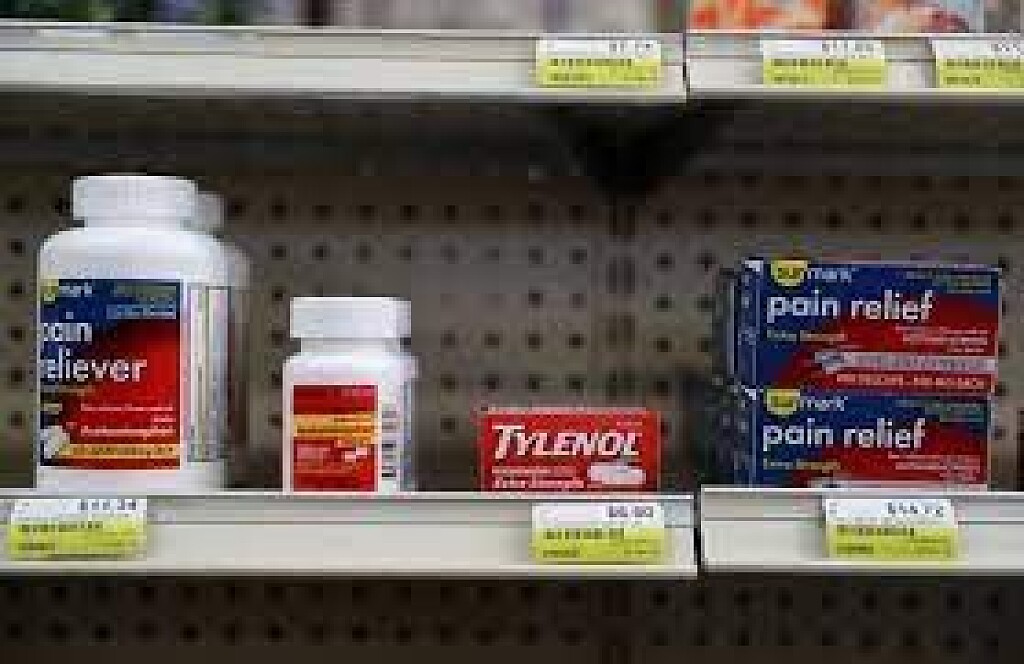Running News Daily
Running News Daily is edited by Bob Anderson. Send your news items to bob@mybestruns.com Advertising opportunities available. Train the Kenyan Way at KATA Kenya and Portugal owned and operated by Bob Anderson. Be sure to catch our movie A Long Run the movie KATA Running Camps and KATA Potato Farms - 31 now open in Kenya! https://kata.ke/
Index to Daily Posts · Sign Up For Updates · Run The World Feed
Should You Take Pain Relievers for Exercise-Induced Aches?
When to take cues from your body and rest, and when to treat soreness with pain relievers
For some athletes, taking pain relievers like Tylenol (acetaminophen) or Advil (NSAID) to ease muscle soreness after a hard workout is second nature. However, while pain relievers may have their place in lessening discomfort, pain can also be an important signal from the body that you’ve overdone it.

So, how do you know when to take an occasional Advil for an achy knee, and when to see a professional for help?
One of the most common reasons people feel sore after a workout is due to delayed onset muscle soreness, or DOMS. This can feel like tenderness in the muscles, stiffness, or mild swelling. For instance, if you had a tough leg workout, you might spend the next few days walking funny up and down the stairs. You can still exercise when you experience this kind of soreness as long as the tenderness doesn’t affect your movement. However, if you can’t properly execute an exercise without shifting form, then it’s wise to take it easy. It’s always important to warm up before a workout, especially if you’re feeling muscle fatigue. This can decrease the chance that your soreness will get in the way of your routine.
Dr. Hallie Zwibel, Doctor of Osteopathic Medicine, the Director of the Center for Sports Medicine, and Assistant Dean of Clinical Operations at the New York Institute of Technology, says that this kind of soreness is typical and shouldn’t be cause for concern. “After exercising, our muscles are inflamed,” he says. “If there’s no larger injury, this is normal and healthy. When the muscle heals after inflammation, it becomes stronger.”
In cases such as this, you can take an anti-inflammatory (such as ibuprofen) until DOMS subsides. Take note, however, of how often you’re doing this. Dr. Reuben Chen, MD, a Board-Certified Sports Medicine Physician, Holistic Pain Management Expert, and the Chief Medical Advisor at Sunrider International, notes that DOMS isn’t necessarily reoccurring, and thus you shouldn’t need to be popping pain relievers after every workout. In fact, as you progress in your physical fitness, DOMS should go away completely within a few weeks to a month.
“If there’s occasional swelling in the knee joint, for example, then taking an anti-inflammatory would be appropriate,” says Chen. “But if you notice the need to take an anti-inflammatory every time you exercise because of swelling and pain, then it’s time to seek professional help.”
To differentiate between injury and DOMS, you should pay attention to how the painful spot feels when you move around. With DOMS, the pain should lessen when you warm up and move your body. Injuries, however, usually become more painful with movement. Instead of soreness, an injury will feel like localized sharp pain and bruising that doesn’t go away.
Chen makes it clear that, while NSAIDs can be helpful for short-term pain management, continuous use can be dangerous. Research shows that long-term usage can impair healing, make someone more prone to injury, and create health problems down the line. He adds that, if you really need a pain reliever, it might be best to take Tylenol, which has been shown to produce fewer GI issues in the future.
“Try some other over-the-counter (OTC) medications, like Tylenol, about 30 to 60 minutes before you hit the gym,” Chen advises. “Also, be sure to consult with your doctor on any OTC meds you take and stay hydrated by drinking fluids before and during any workout.”
Chen, who has a background in traditional Chinese medicine, recommends also considering some Eastern medicine modalities for managing aches and pains. He adds that acupuncture is a beneficial holistic pain reliever alternative. Studies suggest that it’s effective at treating various forms of pain, including osteoarthritis and myofascial pain syndrome.
“Modalities like controlled breathing, ice, and osteopathic manipulative medicine (OMM), are safe, inexpensive, and effective ways to reduce pain,” Zwibel says. “They also empower patients by allowing them to feel more involved in their own care.”
Food, as we know, can often be the best medicine. Turmeric, for example, has been studied for its anti-inflammatory effects on irritable bowel syndrome, psoriasis, atherosclerosis, and other diseases. Hydrolyzed collagen, fatty fish, and ginger also have anti-inflammatory properties. The good thing about these options is that you can consistently take them, unlike NSAIDs that, over time, may cause issues with your heart, kidney, liver, and blood circulation. It’s always a good idea to look into alternatives before opting for pills. Overall, it’s best to avoid regular use of pain relievers like Advil and Tylenol after a workout to ease sore muscles.But if you need to occasionally take the edge off muscle aches and soreness, Tylenol is the best option.
Most importantly, remember to listen to the signals your body is giving you. If that aching isn’t clearing up, or seems more sharp and pronounced, it’s time to see a doctor.
by Outside Online
Login to leave a comment




